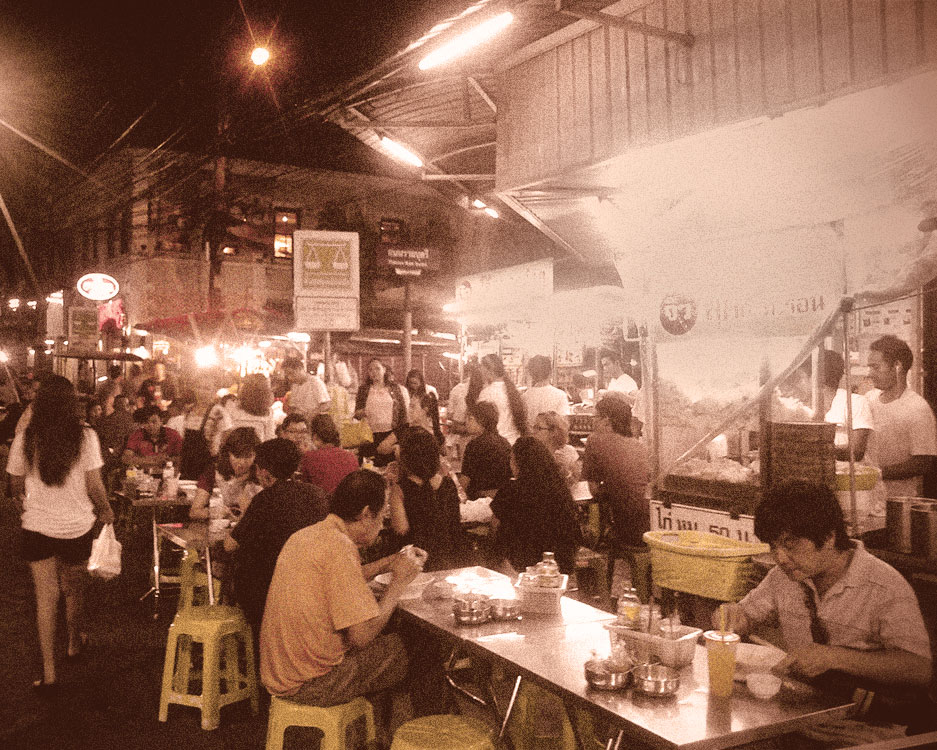Here’s the real reason street food is so delicious

Street food is trendy, but that's not why you should eat it.
The surest way to build your street cred as an adventurous traveler is to eat (and presumably share photos of) street food. It’s become such a cliche now that there’s been an inevitable backlash against the trend. Disdainful “thinkpieces” accuse the new patrons of street food of fetishizing the poor, commodifying the working class, appropriating cultures, or some other highbrow word salad. There does seem to be a grain of truth to the accusation: street food is trendy right now, and if you’re eating it because it’s the thing to do, then you’re totally missing the point.
The point, of course, is that it’s delicious and inexpensive. If you’re a traveler eating street food in a poor country , you’re doing so out of choice. Sure, some backpackers are able to extend their trips by pinching pennies at every meal, but it’s still not the same situation as the typical local customer who, given the choice might well go for the fancy air-conditioned restaurant up the street.
What makes street food so wonderful is that it’s the great democratizer. It levels the playing field and opens it up to all comers. In the US where I’m from, opening a restaurant costs hundreds of thousands of dollars or more. This severely limits who can cook and sell their own food. There is so much red tape and regulation that it can often take well over a year before the first dish ever comes out of the kitchen. Ventilation must be installed, firefighting systems implemented, building inspections performed, and licenses applied for. This high-cost barrier to entry means restaurants are run by those with the money to open them, not necessarily the best cooks.
In the countries with the best street food (or as the locals probably call it, food), anyone with a knack for cooking can try their hand at it. For less than fifty dollars, an aspiring cook can set up a mobile kitchen consisting of two hanging baskets, one with vegetables and meat on ice, the other containing a charcoal brazier. They sling it over their shoulder on a bamboo pole and move to where the customers are. It’s something you see all the time in Southeast Asia, and if they know what they’re doing, they’ll be turning out some of the best grilled meat or seafood you’ll ever taste. It’s a tough way to make a living, but one people will do to make sure their children have more opportunities than they did.
Those with more to invest get a cart and either push it or fix it on as a motorbike sidecar. In Thailand, a full restaurant complete with table and chairs can be loaded onto a single cart and pulled along behind a scooter. Some of the larger street food operations can easily take thousands of dollars to get up and running, but it’s still an affordable option for many people in developing countries.

Photo by Tew
Whatever the setup, whether the food is carried, pushed, driven or even sitting in a rented storefront, the common denominator is low startup and low running costs. By not limiting potential restaurant owners to those with easy access to lots of money and credit, street food opens up the talent pool of cooks, and this directly translates to better quality food.
Restaurants are a tough business anywhere in the world. Reality TV shows give people a glimpse of the high pressure environment of US and European kitchens. The huge amounts of money at risk make it ultra-competitive. In a street food culture the service standards are certainly lower, but the demands on food quality are, if anything, higher. You haven’t seen tough competition until you see a new vendor trying to crack into a Thai market. Everyone in Thailand is a “foodie” (though only Bangkok hipsters use the word), and if you’re not turning out top-notch cuisine, you’ll go under within a month.
Street food is the great democratizer for the purveyor, but it has the same impact on the customer too. Almost anyone can afford to eat delicious food in a country with a street food culture. Compared with poor and even middle class Americans, people with access to street food can eat not only much healthier meals, but incomparably more delicious ones as well, and at a tiny fraction of the cost. It’s not just because things are cheaper in those countries either; living in Thailand I find my cost of living on most things to be around one third of what I’d spend back home in Chicago. For food however, it’s around one seventh, and probably even less when you figure deliciousness into it.
When you travel, by all means eat street food; you’re saving money, eating well, immersing yourself in the culture, and supporting local, independent business people. And take photos of it; surely there are worse things on your friends’ Instagram feeds than your food porn. Write about it, tell your friends about it, then go find the next cart and eat more of it. There are so many reasons to eat street food, just don’t do it because it’s the trendy thing to do.


